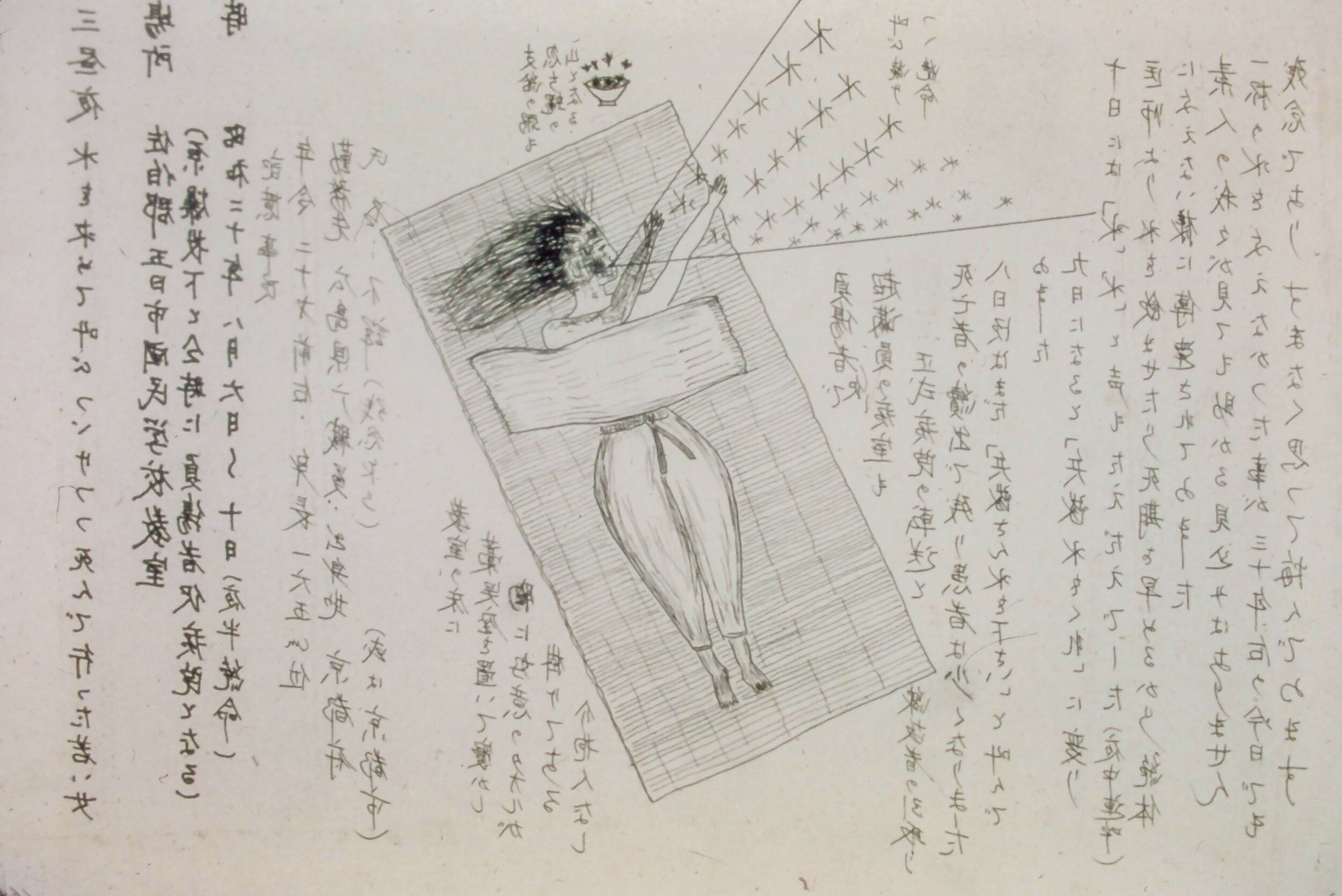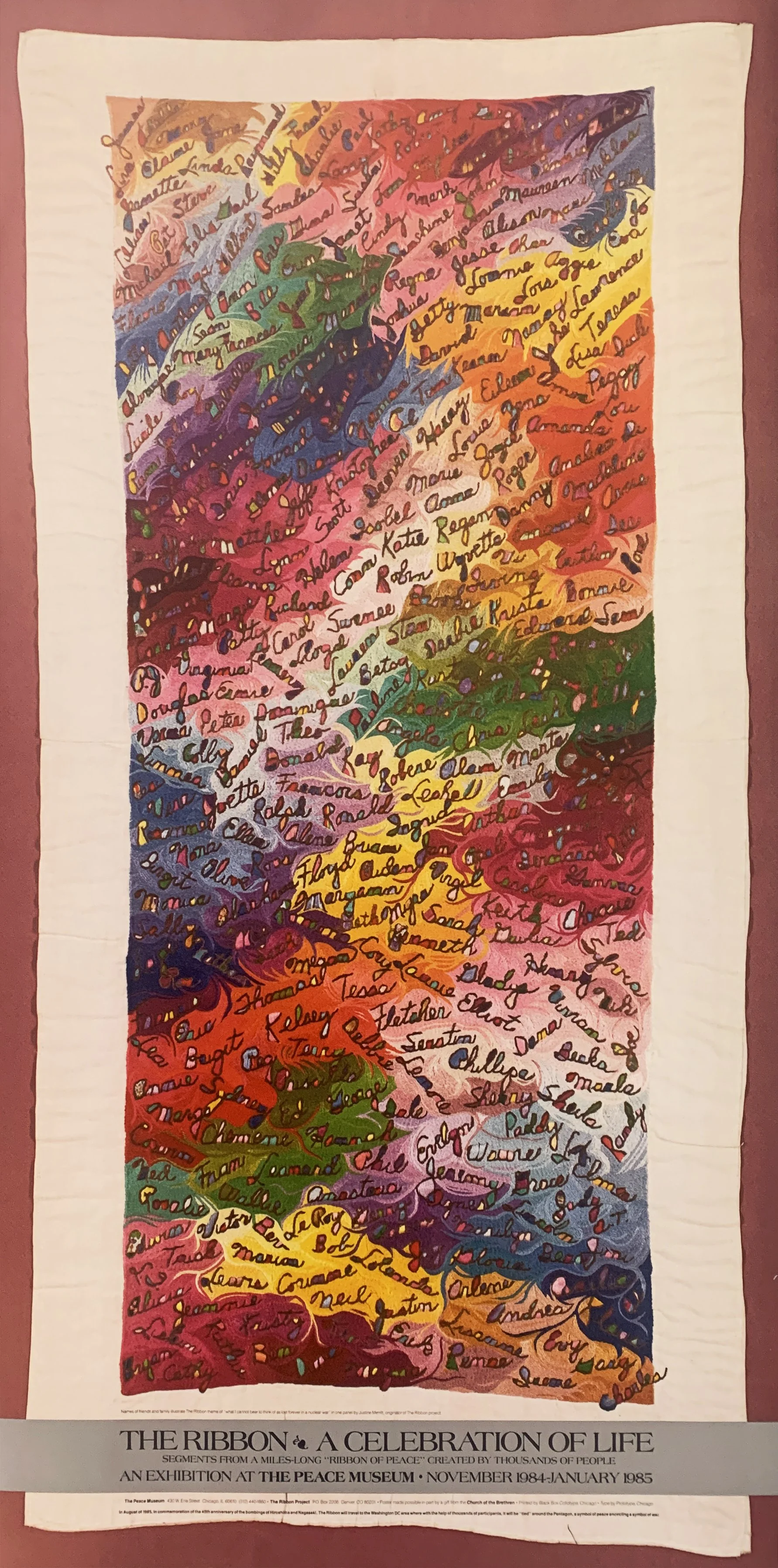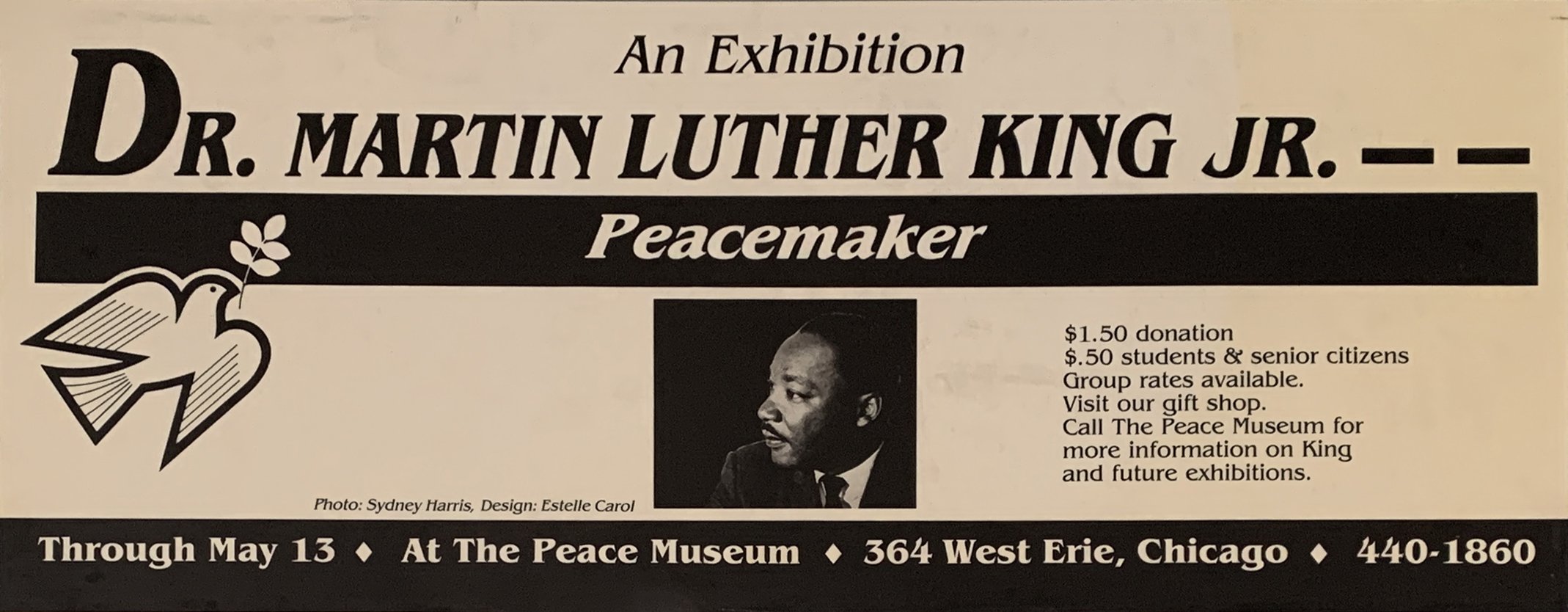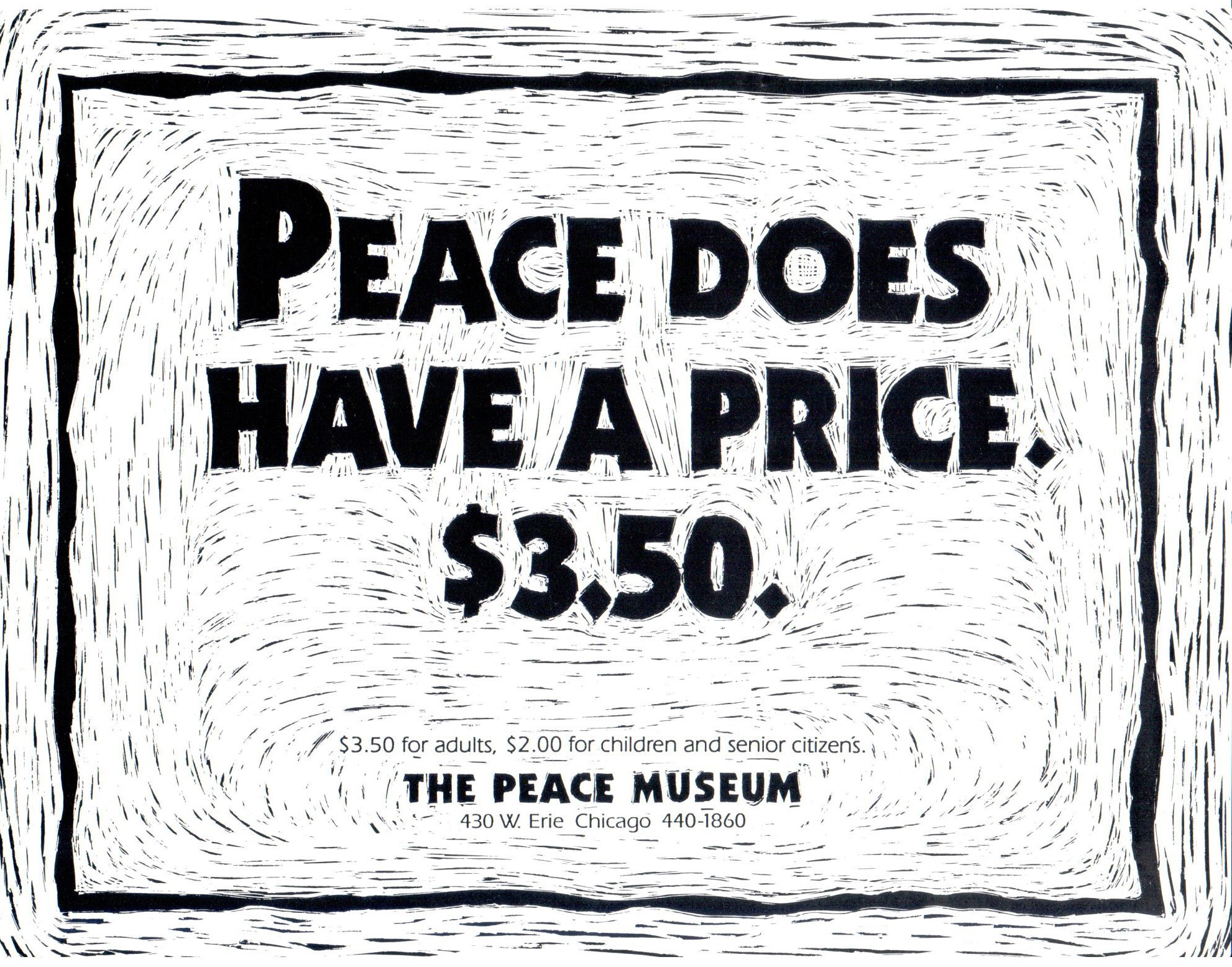
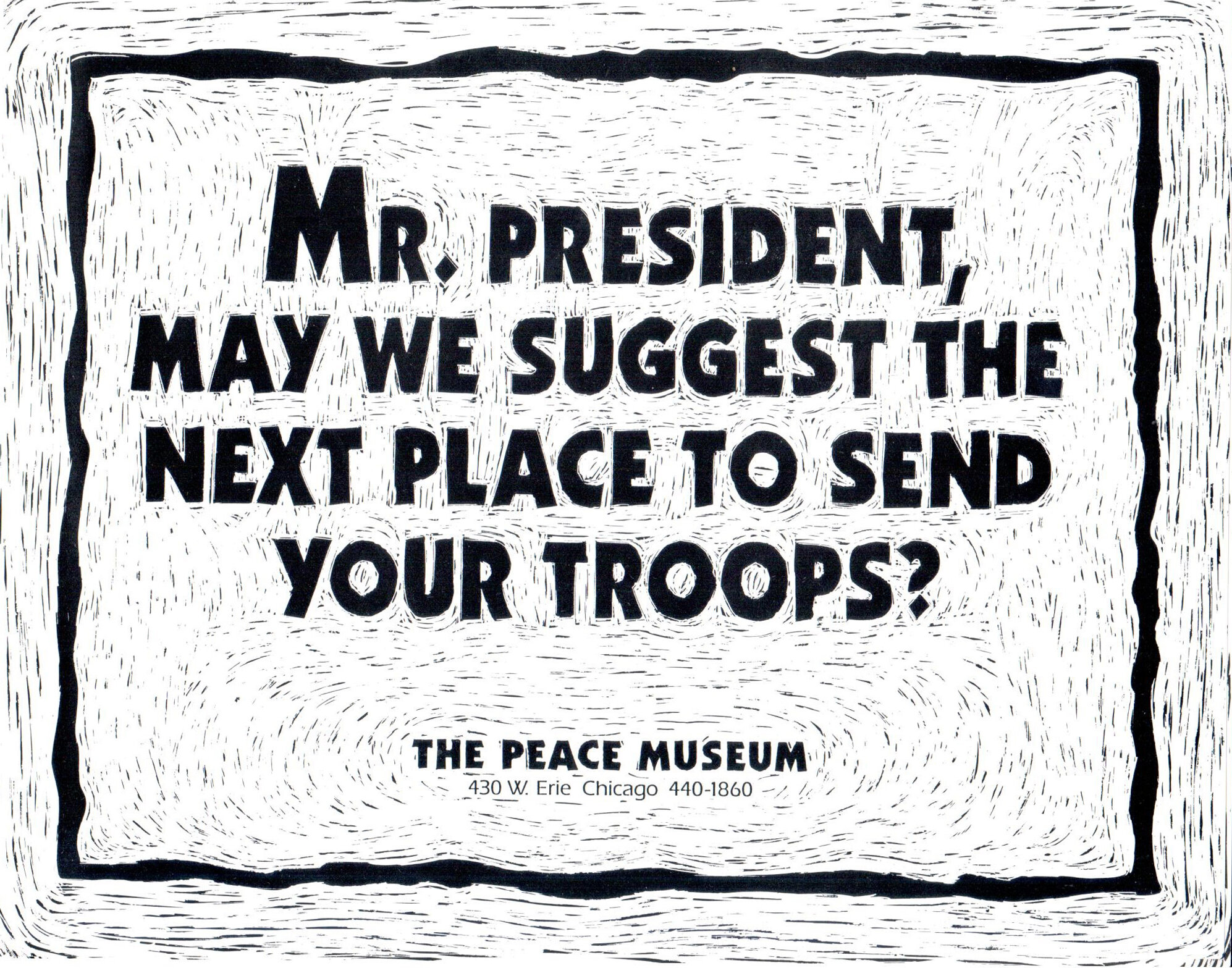


Give Peace a Chance
In 1982, The Peace Museum hosted Give Peace A Chance, a major exhibition about music and peace, featuring John Lennon's guitar inscribed with two drawings of John and Yoko Ono in Lennon's hand. Ono wrote the dedication to the book for the exhibition, published by Chicago Review Press. Also featured in the show were U2, Bob Marley, Holly Near, Joan Baez, Stevie Wonder, Country Joe McDonald, Harry Chapin, Pete Seeger, and Graham Nash, among others. - Peace Museum, Wikipedia
The Unforgettable Fire
Museum in Chicago Focuses on Peace
Thirty years after the atomic bombings of Hiroshima and Nagasaki, Iwakichi Kobayashi, a 77-year-old survivor of the attack on Hiroshima, drew a picture of a vivid image that was etched on his mind as he wandered through the devastated city in search of his son.
He took the drawing, entitled ''At About 4 P.M., August 6, 1945, Near Yorozuyo Bridge,'' to the Japanese Broadcasting Corporation and told its officials, ''I cannot erase the memory of what I saw, so I wanted others to see it.''
The drawing was shown on television throughout Japan, and other survivors were encouraged to sketch their recollections. Three months later, 975 drawings had been received. Now more than 3,000 have been collected.
About 70 of those drawings, 50 from Hiroshima and 20 from Nagasaki, are on display outside Japan for the first time at the Peace Museum in Chicago, along with 43 disarmament posters from 23 nations. Forum for Peace Education Like the Peace Memorial Museum in Hiroshima, the five-month-old Peace Museum here is dedicated to fostering a greater public awareness of the cause and effect of war.
The museum in Hiroshima seeks to do this through its vivid collection of drawings, photographs, and relics of the devastation that occurred on Aug. 6, 1945, when the United States exploded an atomic bomb over that city, killing nearly 130,000 people and destroying 90 percent of the city. But the Peace Museum here is set up as a forum for providing peace education through visual, literary, and performing arts.
Its purpose, according to its founders, Marjorie C. Benton and Mark Rogovin, is to ''provide through the arts a center for discussion and debate on how to build peace in our time.'' It attempts to do this as an archive and through a program of lectures and other efforts aimed primarily at school-age children.
Last spring, for example, the museum sponsored an essay and poster contest for high school students in Chicago. The students were asked to design a poster calling for an end to the nuclear arms race or to pretend that they had won the Nobel Peace Prize and write an essay describing what they did to win the award. Posters From 20 Nations
The museum's first exhibition, entitled ''Against the Wall: Three Centuries of Posters on War and Peace,'' drew more than 3,000 viewers in its two-month run. The exhibit featured posters from 20 nations spanning three centuries, from the French Revolution to the present.
In March, the museum sponsored collection of cartoons and caricatures on war and peace from ''Daumier to Doonesbury.'' The current exhibition called ''The Unforgettable Fire,'' drew about 1,000 people when it opened Friday night. Many of the drawings are similar to those in the Peace Memorial Museum in Hiroshima, highly personal representaions of survivors who had no artistic training. Some are simple pencil sketches of sticklike figures, while others are in color and in considerable detail. Captions Laden With Emotion
The captions, some of which are as emotional as the works themselves, are literal translations from the book, ''The Unforgettable Fire: Pictures Drawn by Atomic Bomb Survivors,'' which was edited by the Japanese Broadcasting Corporation and published last year.
The exhibit was arranged by Mr. Rogovin, a mural painter and curator of the museum, who said the show was inspired by drawings in the book that he described as ''the most powerful visual documents I had ever seen.''
At the conclusion of the current exhibit on Nov. 30, the museum plans to sponsor a traveling exhibit that will include more than 100 antiwar posters from nations throughout the world.
The museum is financed in part by a grant from the National Endowment for the Humanities. It relies heavily on work by volunteers, 30 of whom are being trained as guides to provide bus tours to the museum. The tours will be conducted in Japanese and Spanish, as well as English, Mr. Rogovin said.
By Nathaniel Sheppard Jr., Special To the New York Times Aug. 8, 1982
Exhibitions
Posters













































